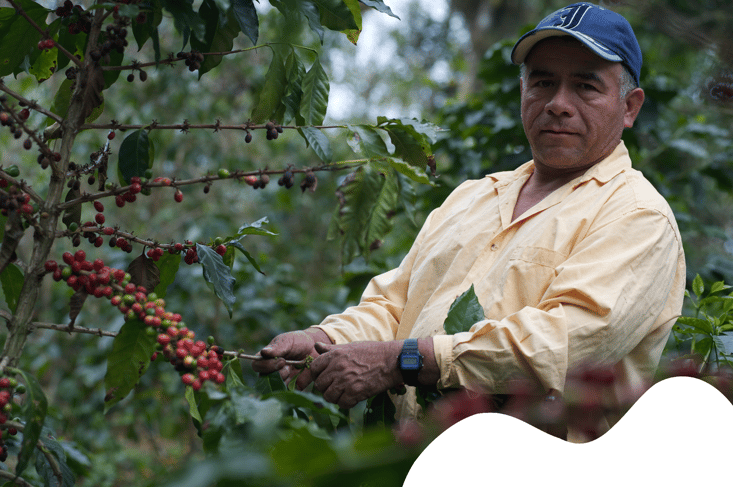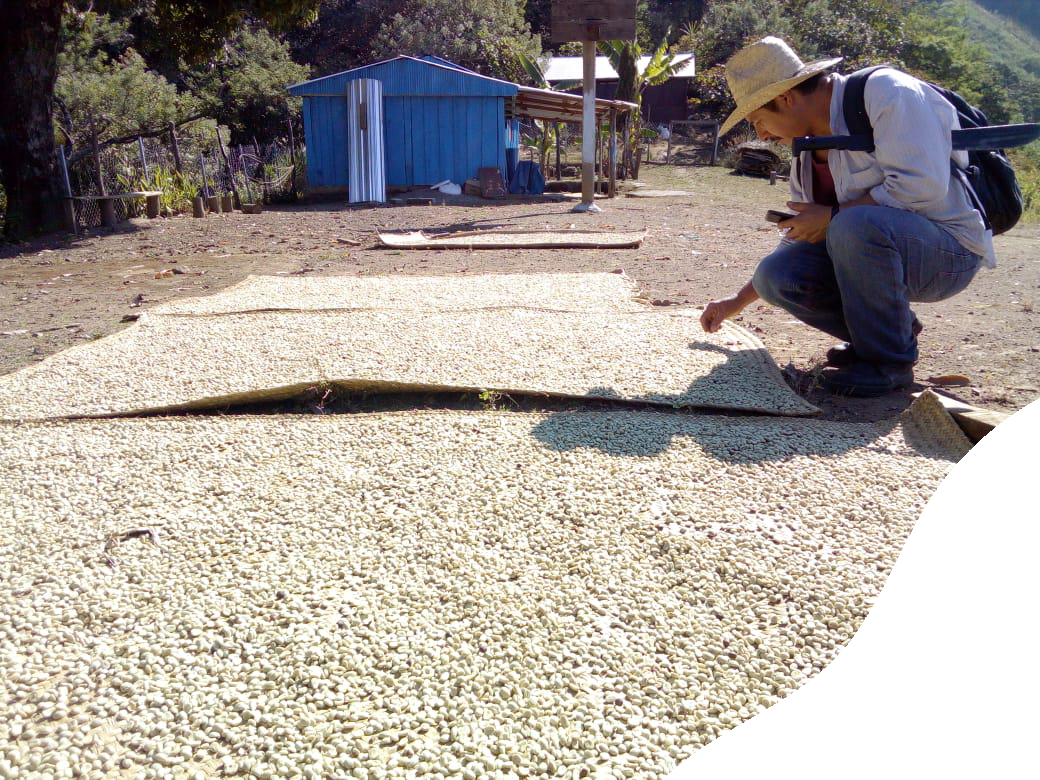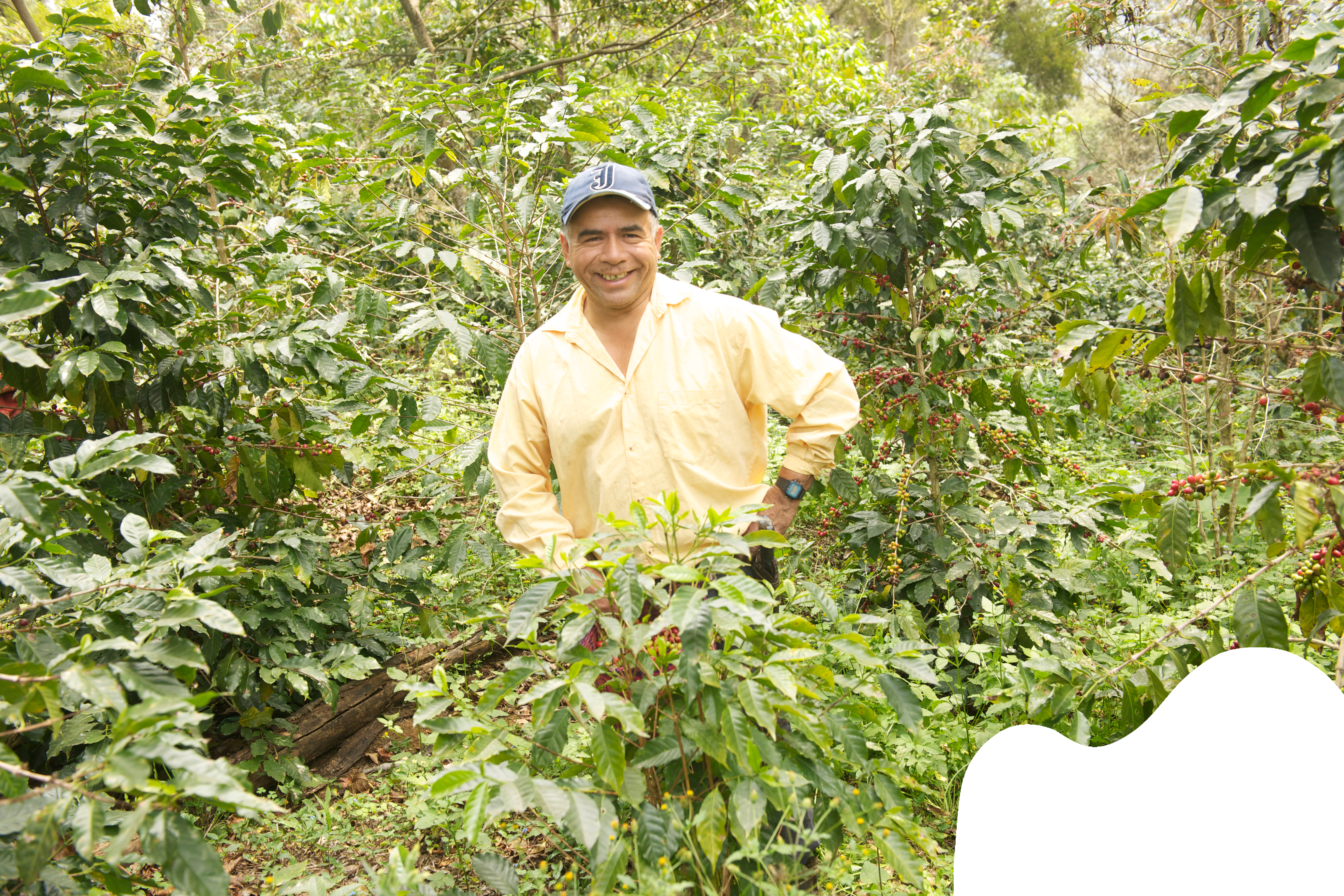
Mexico produces a lot of coffee: it’s among the world’s top 10 coffee producing countries and top 5 in Latin America. Yet, it’s only been recently that Mexico has gained considerable attention among discerning specialty roasters for its quality.
For us at Sustainable Harvest, however, this isn’t a surprise. Mexico’s coffee industry has been fast evolving over the last decade, and we’ve seen more and more interest from roasters wanting to incorporate Mexican coffees into their menus—and not just as the usual blend component. Expressive and fruit-forward single-origin offerings are highly sought after, and Mexican coffee today features remarkably diverse and bright flavor profiles in addition to the cocoa, nutty, toffee, and base note flavors that it’s been known for.
Read on to learn more about where Mexico is now! We talk to our team based in Oaxaca—Chabela Cerqueda (Supply Coordinator), Gema Lopez (Coffee Quality Control Manager), and Amauri Aguirre (Project Director)—to get their take on the current landscape of Mexican coffee.
________________________________________________
The growth and challenges of Mexico's coffee industry
According to our Mexico team, overall demand has risen for Mexican coffee from both international and domestic buyers. Consumers are not only drinking more Mexican coffee, they are also looking to drink better Mexican coffee. In Mexico itself, the specialty culture around Mexican coffee has grown substantially.
For Chabela, it’s been especially rewarding to see coffee culture in Mexico growing not only in big cities like Mexico City or Guadalajara, but also in producing regions like Oaxaca and Chiapas. “Five or ten years ago, you could maybe find one ‘good’ coffee shop doing specialty. Now you can find up to ten or even more just in Oaxaca City. It’s also the case in Chiapas where you even see producer organizations opening their own cafés and experimenting with different brewing methods.”
The increased interest from buyers and the rise of internal consumption in Mexico has not been without challenges to overcome, however.
Mexico’s productivity is low, averaging about 1.65 tons per hectare compared to 3-5 tons per hectare for other Central American countries. This is one of Mexico’s biggest challenges. “It’s a combination of different factors,” says Amauri. “Migration is a factor with farmers giving up their lands and younger generations moving to bigger cities. The impact of climate change has become more intense, with rains coming earlier and becoming unpredictable. Temperatures are rising across the country.”
.png?width=734&name=2e19dee2-83bb-4add-968b-43890a30cb08%20(1).png)
The cooperative structure is also not as prevalent in Mexico as it is in other countries, posing another challenge. Some producing communities do implement “town associations,” which function similarly to cooperatives. These associations create a support network for producers who generally have assigned technicians that provide valuable feedback. But the lack of more comprehensive farmer organizations in many regions can make access to new technologies, training, and education difficult, especially for small coffee farms and older farmers who may not be as open to implementing more modern practices on their farms.
Many farmers are also still working to recover from the devastating impact of the 2012 outbreak of Roya. In the years following this outbreak, we’ve been working with World Coffee Research and IDB on a project to help revitalize Mexico’s producing regions and help producers be more resilient to future climate crises. You can learn more about that project here, and stay tuned for an update!
What you can expect from Mexican coffee
At Sustainable Harvest, we source coffee from three of Mexico’s main producing regions: Chiapas, Oaxaca, and Veracruz. These regions offer incredibly diverse coffees, and we’re constantly finding coffees that take us by surprise, whether it be unexpected varieties or producers finding success with unconventional processing methods.
“The quality of Mexican coffees has consistently improved year after year over the last five years,” says Chabela. “Little by little, Mexican coffee has been adapting to the specialty coffee market and its demands. There’s still a ways to go compared to countries like Honduras, Colombia, or Nicaragua when it comes to advanced processing techniques. But Mexico has the fortune of having excellent conditions, so coffees can be ‘naturally good’ with little effort. When farmers apply our recommendations, participate in trainings, and improve their practices, we’ve seen coffee scores increase by 3 or more points on average.”
Oaxaca

Oaxaca is well-known for its floral and fruity coffees. In Mixteca, coffees are sought after for their delicate, tea-like and exotic profiles; in Mazateca, coffees are exceptionally fruit-forward, with lots of stone fruit and berry notes.
There’s no better example of Oaxacan coffee than the coffees produced by our producer partner, Sicobi, located in Sierra Sur. Sicobi’s coffees have a singular cup profile. While the cooperative's coffees are entirely washed, they profile more like a natural coffee. This is partly due to the area’s dry, arid microclimate, but is also a result of Sicobi’s unique method of fermenting their coffee in wooden tanks. Their meticulous lot separation practices have also contributed to overall quality increasing each year, with the most impressive example being one coffee jumping nearly 2 points from one harvest to the next!
If there were any coffees that we’d recommend that could reshape your impression of Mexican coffee, it would be coffees from Sicobi.
Chiapas
.png?width=1040&name=Preparacio%CC%81n%20naturales%20(1).png)
In this region, we work with four cooperatives: CESMACH, Comon Yaj Noptic, Ejidos San Fernando, and Sierra Azul, all of which offer washed processed coffees with standout sweetness, chocolate notes, and dried fruit character.
“After 2012, Chiapas was a region that recovered faster than others,” Gema explained. “Farmers in Chiapas have been quick to implement farm renovations and change out old coffee trees with higher yielding plants that are also more resistant to pests and disease. Their faster recovery has also given them more opportunities to experiment and innovate.”
Chabela and Gema both agreed that coffees from Chiapas are more consistent overall than other Mexican regions; farmers in Chiapas have had more time and experience utilizing better farming techniques. While hidden gems and exotic profiles are more likely to be found in regions like Oaxaca, Chiapas remains a reliable and dependable origin offering solid coffee year after year.
Veracruz

The region of Veracruz is considered by many farmers to be the Mexican coffee world’s educational nexus. Home to large and well-organized cooperatives as well as research centers, many coffee professionals in Mexico spend time in this region a few times a year to take training courses and brush up on the latest practices to improve their farms.
Our producer partner, Unión Regional Huatusco, is a key cooperative in Veracruz. In addition to providing training and technical assistance, Huatusco operates a nursery that produces 150,000 plants a year and oversees a coffee farm renovation program which renews 450 hectares of farmland each year. Like Chiapas, Veracruz was able to recover from the Roya outbreak faster than other regions, in large part due to cooperatives like Huatusco.
Veracruz is considered to have some of the best soil for coffee farming in Mexico, and the kinds of coffees you can expect from Veracruz rival top coffees coming from countries like Colombia. Expect exquisitely balanced coffees filled with ripe red fruit and caramel sweetness accented by dark chocolate and floral notes of rose and lemongrass.
________________________________________________
We’ve only just scratched the surface for what Mexico has to offer, and we’re excited to see Mexico realize its potential as a specialty powerhouse in the next few years!
We currently have spot coffees from Huatusco that just landed! These won’t last long—grab a sample and see for yourself what Mexican coffee is all about!



.png)
